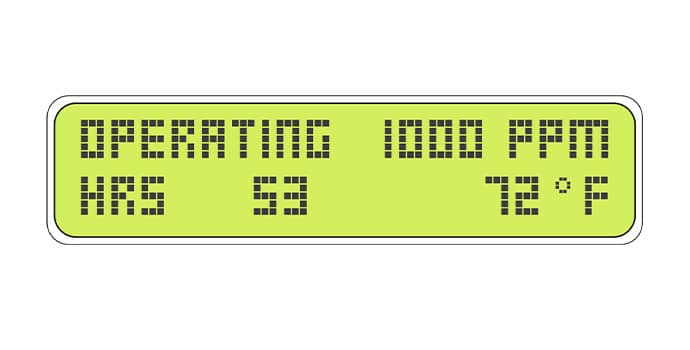Water treatment systems require regular diagnostics to maintain efficiency, reliability, and water quality compliance. System diagnostics help identify performance issues, detect potential failures, and optimize operating conditions, ensuring that the system runs smoothly and effectively.
At Aqua Components LLC, we offer advanced diagnostic tools and automated monitoring systems to help businesses and municipalities troubleshoot, maintain, and enhance their water treatment systems.
This guide explores key system diagnostic techniques, common issues, and how automated diagnostics can improve system efficiency and longevity.
Why System Diagnostics Are Essential in Water Treatment
✅ 1. Prevents Unexpected System Failures
✔ Early detection of pressure drops, flow rate fluctuations, or sensor malfunctions prevents equipment failures.
✅ 2. Improves Water Quality & Compliance
✔ Regular diagnostics ensure that TDS, pH, conductivity, and chemical dosing remain within required limits.
✅ 3. Reduces Downtime & Maintenance Costs
✔ Identifies clogged filters, membrane fouling, and pump inefficiencies before they lead to costly shutdowns.
✅ 4. Supports Predictive Maintenance
✔ Helps in planning membrane cleaning, filter replacements, and pump servicing based on real-time data trends.
Key Diagnostic Parameters in Water Treatment Systems
🔹 1. Flow Rate & Pressure Analysis
✔ Low Flow Rate Detection: May indicate clogged membranes or filter blockages.
✔ Pressure Drop Monitoring: Helps identify leaks or failing pumps.
✔ Differential Pressure Analysis: Detects filter and membrane fouling.
🔹 2. Water Quality & Contaminant Detection
✔ TDS (Total Dissolved Solids) Monitoring: Ensures proper rejection rates.
✔ pH & Conductivity Readings: Maintains water chemistry balance.
✔ Microbial Contamination Alerts: Detects bacterial growth in storage tanks.
🔹 3. Chemical Dosing & Tank Level Monitoring
✔ Dosing Pump Performance: Ensures consistent chemical injection.
✔ Chemical Tank Low-Level Warnings: Prevents underdosing and water quality fluctuations.
✔ Overdosing Prevention: Avoids excessive chemical usage and system corrosion.
🔹 4. Alarm & Event Logging
✔ Membrane Cleaning Reminder: Based on runtime and differential pressure.
✔ Pump & Valve Function Checks: Ensures proper opening/closing cycles.
✔ Emergency Shutdown Triggers: Protects the system from critical failures.
📞 Need an expert diagnostic system for your water treatment plant? Contact us today!
Common Water Treatment System Issues & Diagnostic Solutions
1. Low Flow Rate & Reduced Water Output
🔹 Possible Causes:
✔ Fouled RO membranes or clogged filters.
✔ Malfunctioning pump or incorrect valve settings.
🔹 Diagnostic Solution:
✔ Check flow sensors, pressure readings, and membrane differential pressure.
✔ Perform membrane cleaning or filter replacement if necessary.
2. High TDS or Poor Water Quality
🔹 Possible Causes:
✔ Membrane degradation or scaling.
✔ Incorrect chemical dosing or inadequate pretreatment.
🔹 Diagnostic Solution:
✔ Test TDS rejection rate and conductivity levels.
✔ Adjust chemical dosing settings and inspect pretreatment equipment.
3. Unexpected System Shutdowns & Alarms
🔹 Possible Causes:
✔ Pressure switch failure or electrical issues.
✔ Valve malfunction or sensor misreading.
🔹 Diagnostic Solution:
✔ Analyze alarm logs and historical performance data.
✔ Check power supply, valve operation, and sensor calibrations.
Advanced Diagnostic Tools & Automation Features
1. IoT-Enabled Smart Diagnostics
✔ Cloud-based remote monitoring and data logging.
✔ AI-driven predictive failure detection.
2. Automated Performance Reports & Analytics
✔ Generates trend analysis charts and system efficiency reports.
✔ Stores historical data for compliance tracking and performance optimization.
3. Real-Time Sensor Monitoring & Alerts
✔ Instant notifications for pressure drops, flow changes, and contamination risks.
✔ Enables faster troubleshooting and minimal downtime.
Applications of System Diagnostics in Water Treatment
🔹 1. Industrial Water Treatment Plants
✔ Ensures consistent water output for manufacturing, power plants, and cooling towers.
🔹 2. Commercial Reverse Osmosis & Filtration Systems
✔ Optimizes performance for hotels, hospitals, and beverage production facilities.
🔹 3. Municipal & Wastewater Treatment Facilities
✔ Provides continuous water quality monitoring to meet EPA and environmental regulations.
The Benefits of Smart System Diagnostics
✅ 1. Enhances Efficiency & Saves Costs
✔ Helps detect energy inefficiencies and prevent excessive water wastage.
✅ 2. Reduces Downtime with Predictive Maintenance
✔ Prevents failures by analyzing real-time performance trends.
✅ 3. Provides Instant Alerts & Remote Monitoring
✔ Allows operators to respond to issues quickly, even off-site.
✅ 4. Supports Regulatory Compliance & Quality Assurance
✔ Maintains system logs for audits, reporting, and water quality certification.
📞 Need help diagnosing your water treatment system? Talk to our experts today!
FAQs About System Diagnostics in Water Treatment
Q1: How often should system diagnostics be performed?
✅ Daily monitoring is recommended for critical parameters, with monthly performance reviews for preventive maintenance.
Q2: Can system diagnostics help reduce chemical and energy costs?
✅ Yes! Optimizing pressure, flow, and chemical dosing based on diagnostic data improves efficiency and lowers operational costs.
Q3: How do remote diagnostics improve system performance?
✅ Cloud-based diagnostics allow real-time monitoring, enabling fast response to alarms and reducing downtime.
📞 Have more questions? Contact us for expert assistance!
Conclusion
A comprehensive system diagnostics approach is crucial for maintaining high-performance water treatment operations. Whether analyzing flow rates, pressure levels, TDS trends, or sensor alerts, regular diagnostics help prevent failures, improve efficiency, and ensure compliance.
💡 Key Takeaways:
✔ Smart diagnostics improve efficiency, reduce costs, and prevent system failures.
✔ Automated monitoring provides real-time alerts and performance analysis.
✔ Predictive maintenance prevents downtime and extends equipment lifespan.
✔ Data-driven troubleshooting enhances compliance and operational reliability.
📞 Contact Aqua Components LLC today for expert consultation and automated system diagnostics solutions!


Leave A Comment